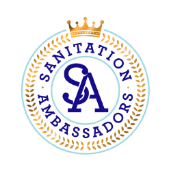WHAT ARE NON-SEWERED SANITATION SYSTEMS (NSSS)?
This term refers to a prefabricated integrated treatment unit with a frontend component (Toilet facility) and a backend component (Treatment facility).
The system operates without connection to any network sewer or drainage system by collecting, conveying, and fully treating the specific input within the system, to allow for safe reuse or disposal of the generated solid, liquid, and gaseous output.
Non-sewered sanitation systems can be installed in many different places around the world. Both urban and rural communities without access to sewer systems and communities and individuals pursuing sustainable sanitation solutions can use NSSS.
Water is a perfect habitat for bacteria, viruses, fungi, worms and other pathogens; water related diseases cause 3.4 million deaths a year globally.
The United Nations estimates that 2.3 billion people do not have access to basic sanitation systems, and 1.8 billion people using a source of drinking water that is fecally contaminated. Human waste must be treated carefully to reduce diarrheal-related deaths around the world, but even in developed countries, many wastewater treatment plants cannot manage this.
In using systems that abide by ISO standards, the outputs of NSSS will be free of pathogens and safe to handle, directly protecting individuals, communities and resources such as drinking water from common pollution and outbreaks of potentially lethal diseases.
Resource consumption, predominately water use, is also minimized as many NSSS are able to recycle liquid discharge back into the system. Useful by-products from both the liquid and solid nutrients, water for reuse, material for the generation of fuel and other reusable outputs can be produced.
WHAT IS A CLOSED LOOP SANITATION SYSTEM (CLSS)?
- It uses no water, or very little water.
- It is decentralized.
- It is much more cost effective than conventional sanitation.
- Urine and faeces are considered valuable resources and are treated on-site to neutralize pathogens.
- It encourages household and community management, as well as local initiatives and local leadership.
WHAT IS CONTAINER BASED SANITATION (CBS)?
Container-based sanitation (CBS) is a sanitation service which provides toilets that collect human excreta in sealable, removable containers on a regular basis and safely disposes of or reuses excreta. While some CBS service providers manage the entire sanitation service chain themselves, others partner with other groups to implement parts of the service model. Since toilet waste is not mixed with water from other household tasks, many providers take advantage of the nutrient rich waste to convert the undiluted excreta into reuse products, such as biogas, solid fuel, compost and animal feed.
Most CBS systems do not require water, electricity or infrastructure to operate and allow the users to take full control of their waste management, especially in peri-urban and rural environments.

WHAT IS COMMUNITY LED TOTAL SANITATION (CLTS)?
Community Led Total Sanitation is an innovative methodology for mobilising communities to conduct their own appraisal and analysis and take their own action to become open defecation free.
At the heart of CLTS lies the recognition that merely providing toilets does not guarantee their use, nor result in improved sanitation and hygiene. Earlier approaches to sanitation prescribed high initial standards and offered subsidies as an incentive. But this often led to uneven adoption, problems with long-term sustainability and only partial use. It also created a culture of dependence on subsidies. Open defecation and the cycle of fecal–oral contamination continued to spread disease.
In contrast, CLTS focuses on the behavioural change needed to ensure real and sustainable improvements – investing in community mobilisation instead of hardware and shifting the focus from toilet construction for individual households to the creation of open defecation-free villages, raising awareness that even if a minority of people continues to defecate in the open everyone is at risk of disease.
CLTS uses participatory methodologies and processes, including community mapping and transect walks, to facilitate communities to analyse their own sanitation practices and faecal-oral pathways. During this process (called triggering) communities come to the realisation they are eating each other’s sh*t, resulting in communities taking action. CLTS triggers the community’s desire for collective change, propels people into action and encourages innovation, mutual support and appropriate local solutions, thus leading to greater ownership and sustainability.
WHAT IS NEXT GENERATION SANITATION (NGS)?
Next Generation Sanitation refers to non-sewered, off grid sanitation systems that treat human waste at source.
It’s an integrated system in which the frontend collects and conveys the specific input to the backend which fully treats the waste within the non-sewered sanitation system, to allow for safe reuse or disposal of the generated solid, liquid and gaseous output (ISO, 2017).
It differs from conventional sanitation in that it seeks to reconfigure the sanitation value chain by eliminating the storage and conveyance components as it favours on-site treatment that produces pathogen-free output whilst using no or very little amount of water as well as integrating resource and energy recovery in the process.
WHAT IS REGENERATIVE AGRICULTURE?
Regenerative Agriculture is a respectful approach to land use and farming, whereby the health of the soil is paramount, and biodiversity is encouraged.
It is a process whereby the land is regenerated by working with nature rather than against it, using various principles such as creating carbon loops (sequestering carbon back into the soil instead of emitting it into the atmosphere), no-till methods of planting, grazing animals within crop rotations, planting cover crops and using mulch, introducing a diverse variety of vegetation not just monoculture crops, and reducing the use of chemical fertilizers.
Regenerative agriculture can benefit tremendously from Closed Loop Sanitation Systems using resources recovered from human excreta.
Phosphorus is a resource that is required by all living organisms and is a key ingredient in many fertilizers. Phosphorous levels around the world are decreasing rapidly, as urbanization increases. Similar to the Peak Oil phenomenon, phosphorus will soon experience a peak in its production, and it is predicted that within the next century, naturally occurring phosphorous will be completely depleted.
In addition to this, methods of producing nitrogen, another critical component in healthy soils, such as the Haber‐Bosch process contribute largely towards global energy expenditure and greenhouse gas emissions.
Recovering phosphorus and nitrogen from human “waste” would help to cope with the increasing global demand and promote environmental sustainability.
Urine accounts for approximately 1% of the total volume of domestic wastewater. Conversely, urine accounts for 80%, 60% and 63% of the nitrogen, phosphorus and potassium in domestic wastewater, respectively.
Moreover, wastewater treatment plants specifically target the removal of nitrogen and phosphorus. This is because these substances can cause a toxic environment in surface water, which can have a negative effect on aquatic organisms.
The need to abandon our conventional silo-based approach to solve our most pressing problems, could not be more obvious.



